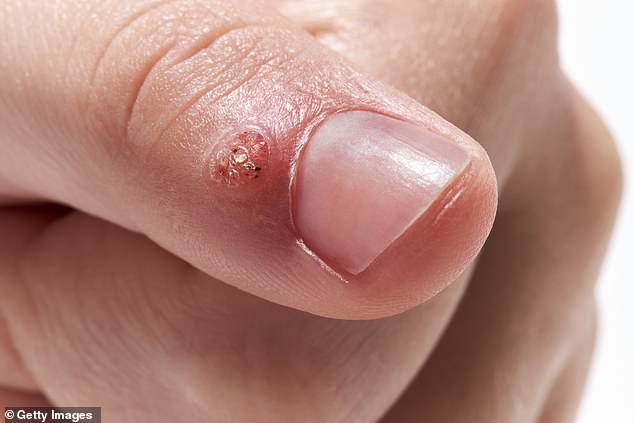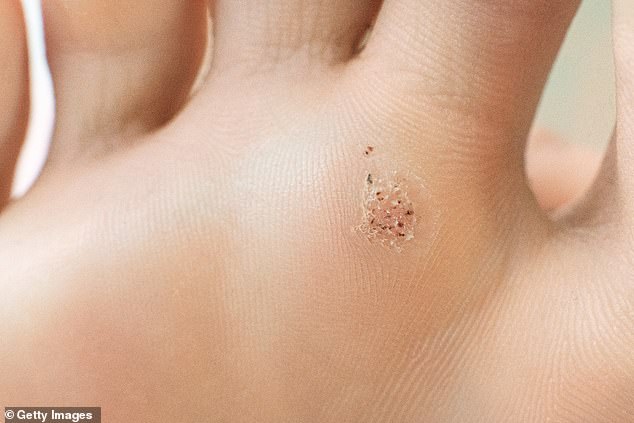Warts often appear without warning: suddenly rough, raised bumps on fingers, hands, or feet that seem impossible to shift. And because, let’s be honest, it’s not the sexiest topic of conversation, many stay quiet and hope they’ll disappear on their own, or stick to drugstore products we can discreetly scan at the self-service checkout.
The reality? Stubborn growths like warts are far more complex than most people realise.
Warts are caused by a virus, which explains why they can spread, multiply and prove frustratingly resistant to treatment. Unlike other common skin complaints such as spots or dry patches, warts require a completely different approach – one that addresses both the visible growth and the underlying viral infection.
Despite being incredibly common (one in ten adults and one in three children are affected), there’s widespread confusion about what warts actually are, how they spread, and, most importantly, what genuinely works to get rid of them. This confusion leads to wasted money on ineffective treatments and, more pressingly, high risk of spreading the infection to others or to other areas of your own body.

To help understand this common skin concern better, we consulted Dr Silas Rowlands, a dermatologist at ALTA Medispa with extensive experience treating viral skin conditions like warts. Here’s your comprehensive guide to what steps to take when dealing with persistent skin growths.
What exactly are warts and why do some people develop them?
Warts are small, rough growths on the skin caused by certain strains of the human papillomavirus (HPV), explains Dr Rowlands. That can sound scary – lots of women associate HPV with a heightened risk of cervical cancer – but there’s no need to worry, since the low-grade HPV strains behind common skin warts are completely different from the higher-risk types linked to some cancers. As Dr Rowlands confirms, warts are ‘completely benign’ – just stubborn and contagious.
The virus enters the skin through tiny cuts or breaks, and essentially hijacks your skin cells, triggering them to produce excess keratin that forms the raised, bumpy texture – and multiply much faster than normal cells. Some people are simply more prone to warts due to differences in immune response. Those with weaker or compromised immunity (such as children, people under stress, or individuals with eczema) tend to develop them more easily, Dr Rowlands notes.
What are the main causes of warts and which is the biggest culprit?
According to Dr Rowlands, the main culprit behind warts is HPV, particularly strains that thrive on the skin’s surface rather than affecting the genital area.

The virus can spread through direct skin contact or indirectly via contaminated surfaces, such as gym equipment, towels or nail salons. Warm, moist environments (like pools or changing rooms) also create ideal conditions for transmission – hence the abundance of verrucae among school-age children.
The most important factor, however, is a weakened or unprepared immune response, Dr Rowlands explains. ‘If your body doesn’t immediately recognise and fight the virus, warts can take hold and multiply rapidly.’
That’s why warts often appear during periods of stress, illness, or in children whose immune systems are still developing. The virus itself is common and easily transmitted, but whether it successfully establishes itself and impacts your skin depends largely on your body’s ability to mount an immediate defence.
Which skin types or tones are most affected?
Unfortunately for us all, warts can appear on any skin type or tone. But, as Dr Rowlands notes, they tend to be more noticeable on lighter skin tones due to contrast in colour and texture.
It’s also, rather unfairly, bad news if you have other skin issues. People with dry or damaged skin barriers, including those prone to eczema or frequent hand washing, are at higher risk because tiny cracks make it easier for the virus to enter, Dr Rowlands says.
This means that while anyone can develop warts, certain groups are more vulnerable because of the condition and integrity of their skin barrier. Healthcare workers and people who wash their hands frequently, and those with existing skin conditions, all face elevated risk. That means it’s often those with the best personal hygiene who (rather unfairly) end up with warts.
What really works for treating warts?
Time for the question everyone’s been waiting for: do those cheap pharmacy treatments actually banish warts for good? Dr Rowlands’ answer is sometimes. Over-the-counter salicylic acid preparations can gradually peel away infected skin, he says, but they’re not going to be effective on more stubborn and deep-rooted warts, which will need in-clinic treatment to stop recurrence.
Methods that destroy infected tissue or trigger an immune response are most effective, Dr Rowlands advises. Cryotherapy (freezing the wart with liquid nitrogen), laser removal, or prescription-strength topical agents like imiquimod are among the most reliable options. Some practitioners use new, advanced methods such as a plasma pen or electrocautery for precision removal with minimal scarring, but these can be pricier if you’re seeking private treatment.

The key difference between effective and ineffective treatments is whether they actually address the viral infection. Treatments that simply file down or cover the wart won’t work because the virus remains in the deeper layers of the skin. Successful treatment must either destroy the infected tissue completely or stimulate the immune system to finally recognise and eliminate the virus.
What’s the single most important step in preventing warts from appearing (or returning)?
Essentially, Dr Rowlands says, preventing warts needs a dual approach: limiting viral exposure and keeping your immune defences strong enough to fight off HPV before it settles in.
For the former, think of simple changes like keeping skin hydrated and protected to prevent cracking, avoiding biting nails or picking at skin, and wearing flip-flops in communal wet areas. If you’ve had warts before, treat new ones early and avoid sharing towels or razors.
Then there’s the immune system-boosting measures: getting adequate sleep, managing stress and eating a balanced diet, which offers the best defence against both initial infection and recurrence. Not only will you feel better in yourself – your skin will thank you for it, too.
